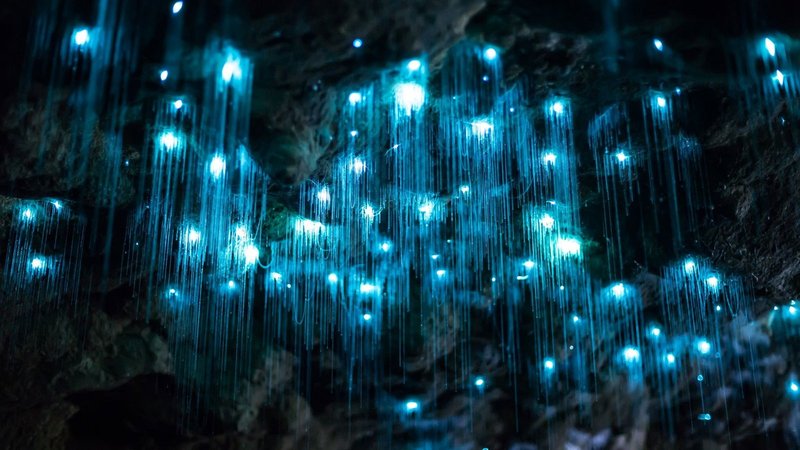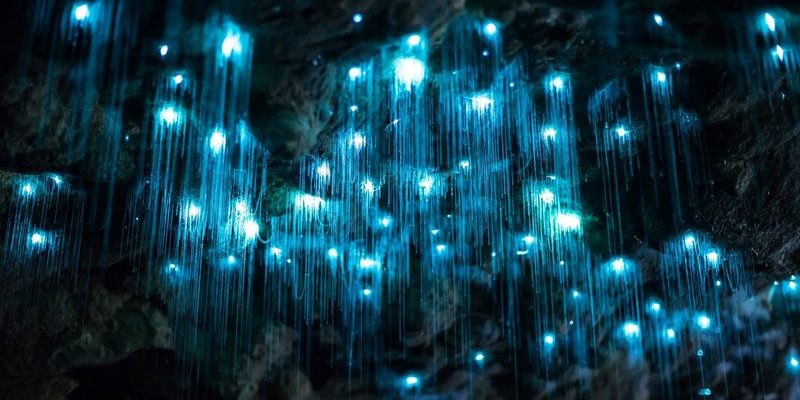
The idea of glow worms making a home in urban environments might seem far-fetched, but let’s delve into the world of these fascinating insects. Their bioluminescence not only captures our imagination but also serves a purpose in their lifecycle. So, grab a cup of coffee, and let’s explore the journey of glow worms, their habitat needs, and whether they can adapt to life amidst skyscrapers and streetlights.
What Are Glow Worms?
Glow worms aren’t actually worms—they’re the larvae of specific beetles, particularly those in the family Lampyridae. You might think of them as nature’s own night lights. These little creatures glow due to a chemical reaction in their bodies, which helps them attract mates and, more importantly, lure prey. Many species produce light in a soft blue or green hue, making them look almost ethereal against the nighttime backdrop.
In their natural habitats, glow worms flourish in damp, dark places, like forests and caves. They create silk threads that shine and trap small insects, serving as both a trap and a source of food. You might be wondering how something that seems so delicate can survive in the wild, especially in urban areas where light pollution and pollution abound. That’s where it gets interesting.
The Urban Environment: A Challenge for Glow Worms
Urban parks are often a mosaic of habitats, but they come with their own set of challenges. The bright lights of the city can drown out the subtle glow of these insects. It’s a bit like trying to see the stars on a cloudy night—you won’t see much! Additionally, landscape management, like mowing grass and using pesticides, can disrupt their natural habitats.
**Pollution** is another hurdle. Glow worms need clean, moist environments to thrive. Urban runoff, litter, and chemicals can significantly impact their survival rates. Plus, the fragmented habitats in cities might limit their ability to breed and maintain stable populations.
But here’s the thing: urban parks often contain patches of greenery. These patches can provide some of the essential elements glow worms need, like moisture and a food supply (insects). So, it’s not entirely hopeless!
Can Glow Worms Adapt to Urban Parks?
You might be surprised to learn that some species of glow worms have already shown the ability to adapt to urban environments. Researchers have found them in parks and green spaces in cities across the world. The key seems to lie in their ability to cope with light pollution and find suitable habitats within these urban jungles.
One solution could be creating more *glow worm-friendly* areas in parks. Think of planting native vegetation that promotes the right conditions—like tall grasses and trees that provide shade. These areas can help maintain humidity levels, essential for glow worm populations.
Additionally, some parks are implementing measures to reduce light pollution. By installing dimmer lights or directional lighting, they can create darker environments where glow worms can thrive. It’s a small change with potentially big results.
The Importance of Biodiversity in Urban Parks
Biodiversity is crucial for any ecosystem, and urban parks are no exception. When various species, including glow worms, thrive in these green spaces, it contributes to the overall health of the environment. Biodiversity helps maintain ecological balance and can even improve the quality of life for city inhabitants.
Urban parks serve as refuges for many species, and supporting creatures like glow worms can enhance the park’s ecosystem. Plus, having glow worms around can enrich the *visitor experience*, turning a simple stroll into a magical adventure for families and nature lovers alike.
Let’s not forget that **education** on these creatures can foster appreciation for urban biodiversity. When people learn about glow worms and their role in the ecosystem, they may be more inclined to support conservation efforts.
Creating Glow Worm Habitats in Urban Parks
So, how can urban parks create better habitats for glow worms? Here are a few thoughtful approaches:
- Plant Native Flora: Incorporating local plants creates a familiar environment for glow worms. Native species often attract the insects these larvae feed on, enhancing their survival chances.
- Reduce Pesticide Use: Chemicals can harm glow worms and their food sources. Parks can adopt organic management practices to keep these areas healthy.
- Maintain Moisture: Installing rain gardens or using mulch can help retain moisture in the soil, creating a friendly environment for glow worms.
- Limit Light Pollution: By adjusting lighting and using reflectors, parks can create darker areas where glow worms can shine without competition from streetlights.
These steps can help transform urban parks into suitable habitats for glow worms, allowing them to flourish alongside other species.
Real-World Examples of Success
There are already several instances where glow worms have been successfully sustained in urban parks. For instance, in Australia, researchers have observed thriving populations in some city parks. These areas are managed with careful attention to minimize light pollution and maintain the natural environment.
In New Zealand, initiatives to plant native vegetation in urban parks have also led to an increase in glow worm sightings. This shows that proactive measures can make a real difference. Communities are becoming more aware of the benefits of supporting local wildlife, including glow worms, which help us appreciate the beauty of nature in urban areas.
These success stories inspire hope and remind us that even in the heart of cities, wildlife can find a way to thrive.
The Future of Glow Worms in Urban Parks
As cities continue to grow, the challenge remains to ensure that urban parks nurture wildlife. The journey for glow worms in urban environments can be likened to a dance—a delicate balance between nature and human development. With awareness and thoughtful planning, we can create spaces where these enchanting creatures can coexist with city life.
You might be wondering what role you can play in this journey. Supporting local conservation efforts, advocating for greener parks, or simply being mindful of light pollution can contribute to a brighter future for glow worms in urban spaces.
Together, we can ensure that these beautiful, glowing insects continue to dazzle and inspire generations to come.
In conclusion, glow worms can indeed thrive in urban parks if we make a conscious effort to create their ideal habitats. By reducing light pollution, planting native species, and managing habitats carefully, we open doors for these enchanting creatures to flourish. It’s not just about glow worms; it’s about fostering a deeper connection with nature right in our backyards. Let’s keep the lights of our urban parks glowing—both from the streetlights and the tiny, magical glow of the worms that call them home.

